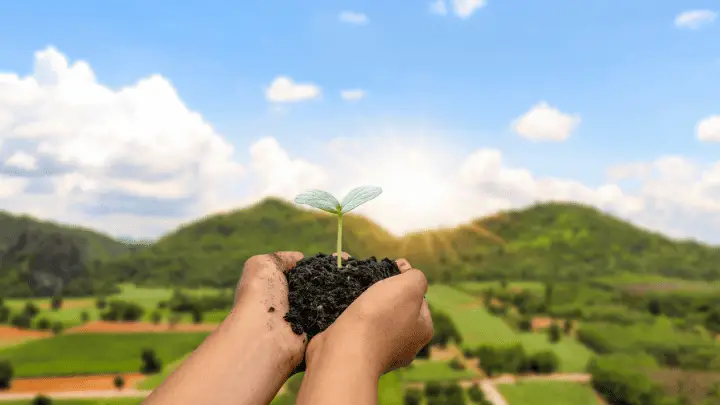In today’s world, where environmental conservation and sustainability have become crucial, understanding the dynamics of an ecosystem and a community is more important than ever.
Both ecosystem and community are terms often used when discussing the relationships and interactions among organisms. However, they refer to distinct concepts. Understanding the difference between ecosystem and community is crucial for scientists, conservationists, and anyone interested in the delicate balance of nature.
By grasping the intricacies of these concepts, we can better appreciate the interconnectedness of all living organisms and their surroundings. In this article, I will delve into the definitions and characteristics of ecosystems and communities.
I will also explore the major differences and connections between these concepts and how they contribute to our understanding of the natural world. So, join me as I unravel the mysteries of ecosystems and communities, and discover how they shape our planet’s delicate balance.
Exploring Ecosystems

An ecosystem is a dynamic and interconnected network of living organisms and their physical environment within a specific geographical area.
It consists of biotic (living) and abiotic (non-living) components, creating a delicate balance sustaining life.
The concept of ecosystems emerged from the realization that all organisms depend on each other and their surroundings for survival.
Components of an Ecosystem
Ecosystems are complex systems of living and non-living components. These components can be broadly classified as biotic and abiotic.
Biotic components refer to all the living things that make up an ecosystem, such as plants, animals, fungi, and bacteria. These organisms interact with each other in various ways, forming intricate food webs and ecological relationships.
Abiotic components, on the other hand, refer to all the non-living things that make up an ecosystem, such as air, water, soil, sunlight, and climate. These abiotic components have a significant impact on the survival and growth of biotic components.
For example, plants require sunlight and water for photosynthesis, while animals rely on a specific temperature range for survival. Understanding an ecosystem’s components is crucial to understanding how ecosystems function and the impact of human activities on them.
Ecosystem Services
Ecosystems provide a multitude of services that are essential for both the environment and human well-being. These include:
- Pollination: Bees, butterflies, and other pollinators aid in the reproduction of plants, ensuring food production and biodiversity.
- Water filtration: Wetlands and forests act as natural filters, purifying water and maintaining water quality.
- Climate regulation: Forests and oceans absorb carbon dioxide, helping mitigate the potential effects of climate change.
Examples of different types of ecosystems
1. Terrestrial ecosystems
Terrestrial ecosystems include forests, grasslands, deserts, and tundra. Forests, for instance, are ecosystems characterized by trees and their undergrowth, while grasslands are habitats where the dominant vegetation is grasses.
Terrestrial ecosystems support various plant and animal life and provide ecosystem services like carbon sequestration, water filtration, and nutrient cycling.
2. Aquatic ecosystems
Aquatic ecosystems include freshwater and marine ecosystems. Freshwater ecosystems, such as rivers, lakes, and wetlands, support a range of species, from plankton to fish, amphibians, and reptiles.
Marine ecosystems, which include oceans, coral reefs, and estuaries, support an even wider array of species, from tiny phytoplankton to whales and sharks. These ecosystems are also important for the economy, providing food, livelihoods, and tourism.
3. Artificial ecosystems
Artificial ecosystems, also known as human-made or built ecosystems, are habitats created by humans. These include gardens, parks, farms, and urban environments.
Artificial ecosystems can provide important services, such as carbon sequestration, air purification, and urban cooling. They can also support biodiversity if designed with native plants and habitats in mind.
Exploring Communities

Communities refer to groups of different living organisms that coexist and interact with each other within a specific habitat or environment. They are vital in maintaining ecological balance and sustaining life on Earth.
The relationships between these organisms can be complex and dynamic, and studying communities helps us understand the intricate web of interactions that occur within ecosystems.
Interactions within a community
1. Competition
Competition is an important interaction within a community that can occur between individuals or groups seeking the same resources. This can lead to various outcomes, such as one group dominating the resources, coexistence, or even extinction of one group.
In the animal kingdom, competition exists between predators and prey or members of the same species for mates and territory. Competition can be seen in human communities’ business, sports, or social groups.
It can drive individuals or groups to perform better, but it can also lead to negative consequences if it becomes too intense or leads to harmful behaviors.
2. Predation
Predation is an important interaction within a community involving a predator and its prey. The predator hunts, kills, and feeds on its prey in this relationship. Predation is crucial in controlling the population size and maintaining the balance within a community.
The predator benefits from consuming prey, gaining energy and nutrients for survival, while the prey population is regulated, preventing overpopulation.
3. Mutualism
Mutualism is a type of interaction where both organisms in a community benefit from the relationship. This could involve one organism providing a resource or service to another in exchange for something they need.
For example, bees and flowers have a mutualistic relationship, where bees pollinate flowers, and in turn, the flowers provide nectar for the bees to feed on.
Mutualism is an important aspect of maintaining the balance and sustainability of a community, as it ensures that all organisms have their needs met and can thrive.
Key Differences between an Ecosystem and a Community
| Criteria | Ecosytem | Community |
|---|---|---|
| Scope | Ecosystems are larger in scope and can encompass multiple communities within them. | Communities are smaller units within an ecosystem. |
| Components | Studying ecosystems involves understanding the physical and biological aspects and the ecological processes that drive them. | Primarily concern biotic factors, i.e., living organisms. |
| Energy flow | Ecosystems involve energy flow from the sun to the producers (plants) and then through the food chain’s various trophic levels (consumers). | Communities are concerned with the relationships and interactions between the different species within the trophic levels. |
| Stability | Ecosystems are more stable than communities since they encompass a wider range of species and interactions. | A community may be more prone to fluctuations and changes in population dynamics. |
| Size | Ecosystems can vary greatly in size, from small microcosms like a pond or forest to large-scale biomes like a desert or rainforest. | Communities are specific to a particular habitat within the ecosystem. |
| Focus | Ecosystems focus on the overall functioning and processes of the environment, including nutrient cycles, energy flow, and biogeochemical cycles. | Communities focus on the species composition, diversity, and interactions within a specific area. |
| Conservation efforts | Conservation efforts often target both ecosystems and communities. However, conserving an ecosystem aims to preserve the overall integrity and functioning of the environment. | Conserving a community may involve protecting specific species or habitats within the larger ecosystem. |
| Research | Studying ecosystems involves understanding the physical and biological aspects, as well as the ecological processes that drive them. | Studying communities focuses more on population dynamics, species interactions, and their effects on the community structure. |
| Ecological functions | Provide ecosystem services, like nutrient cycling and habitat creation. | Influence species distribution, abundance, and diversity. |
The Connection Between An Ecosystem and A Community
Although ecosystems and communities are distinct concepts, they are deeply interconnected. Ecosystems provide the foundation for communities to thrive as different species interact within them to form diverse communities.
At the same time, communities influence ecosystems’ structure and function by shaping species’ distribution and abundance. The following are some connections between an ecosystem and a community:
1. Communities rely on the natural resources provided by ecosystems for survival and sustenance, such as clean air and water, fertile soil, and biodiversity.
2. Communities can impact ecosystems through their actions, such as pollution, deforestation, and overconsumption of resources.
3. The health and well-being of a community are linked to the health and stability of the ecosystem it resides in, as ecological disruptions can affect food systems, water sources, and public health.
4. Ecosystems provide cultural and recreational opportunities for communities, such as hiking trails, parks, and wildlife observation.
5. A better appreciation and understanding of nature’s value and interconnectedness can be achieved through community involvement in ecosystem management and biodiversity conservation.
FAQs
Why are keystone species essential in ecosystems?
Keystone species play a crucial role in maintaining ecosystem balance and biodiversity. Their presence ensures the stability of the entire ecosystem.
How do conservation efforts benefit both ecosystems and communities?
Conservation efforts protect biodiversity, preserve habitats, and create a harmonious relationship between human communities and the natural environment.
What is ecological succession, and how does it affect ecosystems and communities?
Ecological succession is the process of species replacement and community evolution over time. It impacts the composition and dynamics of both ecosystems and communities.
Why is community-based conservation important?
Engaging local communities in conservation efforts fosters a sense of responsibility and stewardship, making conservation initiatives more sustainable and effective.
Final Thoughts
In conclusion, understanding the difference between ecosystem and community is crucial in comprehending how living organisms interact with each other and their environment.
While these terms may seem interchangeable, ecosystem refers to an environment’s physical and biological components. Community focuses on the different populations of organisms living in that environment.
By studying these concepts, we can gain a greater appreciation for the intricate balance and interconnectedness of the natural world. No matter your biology knowledge level, learning about an ecosystem and community can enhance your appreciation for nature.
It can also inspire you to preserve it for future generations.
You can also learn more about the impact of natural resource extraction on local communities.
Thanks for reading.

